#Pedro Almeida news
Text

Home Air Shows
IMAGES: How was the participation of FAB and KC-390 in RIAT 2022?
An entourage with Officers and crew of the KC-390 Millennium, of the Fat Squadron, represented the FAB at the aviation fair that is considered one of the largest in the world.
Fernando Valduga By Fernando Valduga 07/18/2022 - 7:30 pm in Air Shows, Brazilian Air Force, Military
The KC-390 Millennium, of the Brazilian Air Force (FAB), an aircraft operated by the First Squadron of the First Transport Group (1st/1st GT) - Fat Squadron, of Galeão Air Base (RJ), was on display from July 15 to 17 at the Royal International Air Tattoo (RIAT 2022).
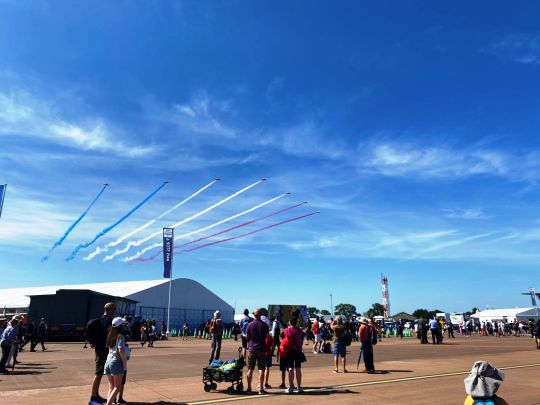
The aviation fair held in Fairford, England brought together military personnel from dozens of countries, as well as visitors, corporate guests and global partners.
youtube
In addition to the presence of the vector of tactical and logistical transport and in-flight refueling, developed and manufactured by Embraer, a Brazilian company, the FAB sent an entourage with General Officers and Officers to learn about the news of the sector, as well as to exchange experiences.

The fair, which did not take place in previous years due to the restrictions of the COVID-19 pandemic, was resumed this year with the aim of bringing together curious and aviation lovers who closely follow the overflights and maneuvers in the skies. Visitors had the opportunity to get to know an exhibition with hundreds of aircraft of all shapes and sizes, times and countries in the world

RIAT has this name in allusion to the images that aircraft form in the skies with smoke during the maneuvers they perform, creating symbols, shapes, circles, that is, making a kind of "tattoo or drawing in the sky".

FAB at the Royal International Air Tattoo 2022
The Commander of the Brazilian Air Force, General Carlos de Almeida Baptista Junior, was part of the entourage that participated in the event. Prior to RIAT, the General Officer was at the Global Air & Space Chief's Conference (GASCC), where he signed the Declaration of Intent for the Collaboration of Global Air Forces on Climate Change.

Lieutenant General Baptista Junior, accompanied by other FAB military personnel, also participated in meetings and visited several booths to learn about the technological news in the aviation sector.


"It is in these opportunities that we bring Brazilian products, what we are doing in our country and with our Air Force. We have here a KC-390, a product of Brazilian industry, the result of a partnership between Embraer and the Force for more than ten years, no longer a prototype, but a standard aircraft that is operating at Galeão Air Base with our crew. This generates an integration with the other Air Forces that are thinking about how their transport aircraft of this class, from 20 to 24 tons, will be replaced," he commented.
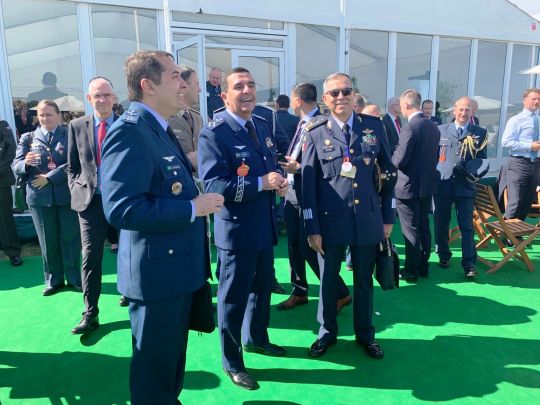
The General Officer also highlighted the opportunity to be close to industry representatives, in addition to interacting, developing trust with allies and presenting the necessary material for the FAB to continue planning the next programs, always focusing on the evolution of the Institution.

For the Commander of the General Support Command, General Pedro Luís Farcic, who was also at the fair, the event becomes of unique relevance, especially due to the current, operational and logistical moment that the FAB finds itself. "We are living a unique moment at FAB, with the receipt of new projects such as the KC-390 Millennium, Gripen and happy with the acquisition of two aircraft that will be the future strategic refuelers, the A330. These novelties require a technological complement that such a fair greatly facilitates our knowledge," he added.
RIAT 2022: Training the next generation Air Force
This year, RIAT 2022 has as its central theme "Training the Next Generation Air Force". In order to expand knowledge, the FAB Commander invited military personnel who work in the training and specialization of Air Force pilots, including the Commander of the Air Force Academy (AFA), Air Brigadier Marcelo Gobett Cardoso; the Commander of the First Squadron of the Eleventh Aviation Group (1st/11th GAv) - Hawk Squadron, Lieutenant Colonel Aviator Everson Lousano Galvão; the Commander First Squadron of the Fifth Aviation Group (1st/5th GAv) - Rumba Squadron, Lieutenant Colonel Aviator Rosemberg Gomes da Silva; and the Commander of the First Air Instruction Squadron of the AFA, Major Aviator Guilherme Gonçalves Herculian.
The Commander of the AFA, the FAB Teaching Organization responsible for the training of Aviator, Intendant and Infantry Officers, commented on his participation in RIAT 2022.
"Being here is an excellent opportunity to get to know the new concepts, techniques and doctrines aimed at primary and basic air instruction of the training of the military pilot, practiced in the other Air Forces participating in the RIAT, with the purpose of studying possible improvements in the training of the Aviator Officer of the future," said the General Officer.
The Commander of the Hawk Squadron, Lieutenant Colonel Galvão, who works in the specialization of pilots in the FAB, stressed the opportunity to participate in the fair. "It is of paramount importance to add knowledge and foster the search for excellence in the preparation of future FAB combat pilots," he added.
The Commander of Rumba Squadron, Lieutenant Colonel Rosemberg also commented on the event. "Being present at RIAT is a great opportunity to have contact with the most up-to-date doctrine of other countries, which allow us to reflect on ours and maybe an improvement or maintain what is already being done," he said.
FAB's KC-390 Millennium
The KC-390 Millennium, on display at RIAT 2022, is a military tactical transport aircraft designed to set new standards in its category. Some of the strengths of the aircraft are mobility, robust design, greater flexibility, state-of-the-art proven technology and easier maintenance.
The Commander of the KC-390 Millennium in the mission, Captain Aviator Romulo dos Santos Pinto, highlighted the importance of participating in the fair and his professional satisfaction for the opportunity to show the operational potential of the FAB outside Brazil, through the KC.
"The great differential of this aircraft is that it can, in a short time, be configured to perform various types of missions such as tactics, low-high navigation, cargo and personnel launch, fire fighting, in-flight refueling, search and rescue. And, for me, it is a privilege to have this opportunity to participate in the fair, we are not only showing the capabilities of the aircraft, but also the capacity of Brazil and the Brazilian people who are highly competent, have development to produce an aircraft of this capacity and show the whole world, not least because it does not lose to any other who is here, it stands out being a reference in the Royal International Air Tattoo," concluded the Officer.
During the visitation period, aviation enthusiasts got to know the aircraft and commented on the opportunity to be close to an aircraft manufactured in Brazil and that fulfills several missions by the FAB.
"It is a great satisfaction for us to be here and see an aircraft like this, with all Brazilians and talking about Brazil, kills nostalgia and this makes us proud to be Brazilians," commented the visitor, a native of Goiânia, but who has lived in England for just over five years, Giovanni Paolini.
“I believe that the KC-390 will be a great addition to the Royal Dutch Air Force, which will supply us well by transporting the supplies we need and is also a very modern plane. So, I believe it will serve us well," said the Military of the Royal Dutch Air Force, Jacco Weidenaar.
The RIAT was closed on Sunday (07/17) and thus the entourage went on Monday (18) to another fair, the Farnborough International Airshow (FIA 2022), held at Farnborough Airport, a city located about 15 minutes' flight aboard the KC-390, which will also be on display for military personnel, businessmen and visitors from all over the world.
Photos and Video: Petty Officer Manfrim / CECOMSAER
Source: Air Force Agency, by Lieutenant Letícia Faria
Tags: AirshowMilitary AviationFAB - Brazilian Air ForceKC-390 MillenniumRIAT - Royal International Air Tattoo
Previous news
Royal Moroccan Air Force orders a fleet of Airbus H135 helicopters
Fernando Valduga
Fernando Valduga
Aviation photographer and pilot since 1992, he has participated in several events and air operations, such as Cruzex, AirVenture, Dayton Airshow and FIDAE. He has works published in a specialized aviation magazine in Brazil and abroad. He uses Canon equipment during his photographic work in the world of aviation.
Related news
FARNBOROUGH
Royal Moroccan Air Force orders a fleet of Airbus H135 helicopters
07/18/2022 - 7:00 PM
FARNBOROUGH
First flight of the British FCAS demonstrator should take place by 2027
07/18/2022 - 6:23 PM
Norwegian F-35 fighter arriving in Cameri. (Photo: Italian Ministry of Defense)
MILITARY
Italy receives the first international F-35 at its Cameri maintenance center
07/18/2022 - 4:00 PM
MILITARY
U.S. Marine Corps orders the MQ-9A ER drone
07/18/2022 - 2:00 PM
Draken Europe's L-159.
MILITARY
Czech L-159 jets will become aggressors during RAF pilot training
07/18/2022 - 1:00 PM
MILITARY
Selection of the sixth-generation fighter of the U.S. Air Force should come out soon
07/18/2022 - 12:00 PM
HOME Main Page Editorials Information Events Collaborate SPECIALS Advertise About
Cavok Brasil - Digital Tchê Web Creation
Commercial
Executive
Helicopters
History
Military
Brazilian Air Force
Space
SPECIALS
Cavok Brasil - Digital Tchê Web Creation
1 note
·
View note
Text
Centro de Ciências do Mar apoia dois parques eólicos 'offshore' em Portugal
A minimização do impacto dos parques eólicos 'offshore' na flora e fauna marinhas é o objetivo de um acordo de colaboração assinado entre o MARE – Centro de Ciências do Mar e do Ambiente e a empresa IberBlue Wind.

Em comunicado enviado à agência Lusa, esta 'joint venture' especializada na promoção de projetos eólicos 'offshore' flutuantes, que opera no mercado ibérico, informou que “colaborará com o MARE no desenvolvimento de atividades científicas relacionadas com o estudo dos ecossistemas aquáticos, atividades de inovaç��o, transferência de conhecimento e outras atividades de formação e de divulgação científica”.
O acordo é dirigido ao desenvolvimento de dois parques eólicos planeados pela IberBlue Wind para Portugal, ao largo da Figueira da Foz, no distrito de Coimbra, e de Viana do Castelo.
“A colaboração entre as duas entidades tem como objetivo estudar o potencial impacto dos parques eólicos 'offshore' na flora e fauna marinhas”, acrescentou.
O trabalho conjunto das duas entidades permitirá conceber “soluções que garantam a coexistência das instalações com o meio natural da zona de implantação das eólicas, reduzindo o seu potencial impacto sobre a população piscícola e promovendo a sustentabilidade da atividade pesqueira”.
A parceria abrange os projetos 'Botafogo', junto à Figueira da Foz, para um parque eólico com uma área prevista de 359 quilómetros quadrados (km2) e uma potência instalada de 990 megawatts (MW), e 'Creoula', nas proximidades de Viana do Castelo, com uma superfície de 413 km2 e uma potência instalada de 1.440 MW.
Em conjunto, segundo a nota, os dois projetos “poderão fornecer energia limpa” a mais d 1,6 milhões de habitações.
Na assinatura do acordo, participaram Pedro Raposo Almeida, diretor do MARE, e Enrique de Farago, Manuel Monteiro e Tiago Morais, em representação da IberBlue Wind, bem como os investigadores José Lino Costa e Bernardo Quintella, daquele centro científico, e Hugo Miranda, vice-diretor da Faculdade de Ciências da Universidade de Lisboa.
A IberBlue Wind é constituída pelas empresas espanholas Proes Consultores e FF New Energy Ventures, além do grupo irlandês Simply Blue, líder em energia eólica flutuante 'offshore'.
0 notes
Text
Jailton Almeida vs. Curtis Blaydes rebooked for UFC 299 in March
MMA Fighting – All PostsRead More
Filed under:
ByDamon Martin
Dec 12, 2023, 2:38pm EST
/
new
Photo by Pedro Vilela/Zuffa LLC via Getty Images
Heavyweights Jailton Almeida and Curtis Blaydes are set to clash at UFC 299 on March 9.
Multiple people with knowledge of the promotion’s plans confirmed the news to MMA Fighting on Tuesday.
Almeida and Blaydes were originally scheduled to meet in…
View On WordPress
0 notes
Text
vimeo
A car takes two characters on a journey through the four seasons, on a project that reflects what’s actually the meaning of reality. “Drives you Wonder” is a car commercial that questions
whether a new virtual or an expected physical conclusion are the ultimate answer. This inner reflection blossoms an external revelation about the value of our state of mind, embracing the possibility of always being able to create our own reality, telling us that a feeling can take us anywhere.
Credits
Production Co. | Kaus @kaus.film
Diretor | Steve Bruno @_stevebruno
Executive Producer | Thiago Mascarenhas @tzmascarenhas Adriana Yamamoto @yamamotoadri John Sahs @jasahs
Legal Advisor | Gabriel Amaral @gabamaralo
1st AD | Bice Costa @bicecosta
Production Coordinator | Thiago Freire @fr3ire (@biscuvitasquad) ,
Producer Nahara Faissú @naharafaissu ,
Assistant Producer Cristiane Barini Néspoli, Juliana Furtuoso
Plateau Rafael Martins
Diretor of Photography | Nicholas Bluff @nicholas_bluff
1st Camera Assistant | Mauro Angelo
2nd Camera Assistant | Henrique Terra (Messi)
Logger Edson Paiva
Still Photography | Katharina Giglio @katharinagiglio
Production Designer | Eduardo “Crox” Kissajikian @edukissa
Pratical Effects | Farjala
Car Dresser Marcos Almeida
Costume Designer | André Braune @andrebraune
Costume Assistant | Allan Fernandes , Andressa Simões
Make up Tati Garcia
Graphic Design | Cabinet Projets with Pedro Gabbay, Rodrigo Sganzerla
Casting Producer | Cadu Gandara @contrastemgmt
Driver | André Lima @iam.andrelima
Passenger | Julia Mendes @juliamendesss
Gaffer | Walerio Rosa @walerio_rosa
Gaffer Assistant | Balbe Figueiredo, Claudinei Marcelio, João Neto, Airton Junior, Bruno Ribeiro
Key Grip | Carlos Fidelis @carlos_fidelis_key_grip
Grip Assitant | Orlando, Fabio Silva, Adriana Lima, Rosangela Francisco, Djalmo Cerqueira
Gear Rental | Marc Films @marc.films
Co-Production Quanta @estudioquanta
Virtual Production Quanta @estudioquanta
Virtual Production Director Diogo Costa Pinto @diogo.costapinto
Virtual Production Producer Marcela Favaro @mfdcmfdc
Virtual Production Operator Leonardo Silverio, Gabriel Ferreira, Vinicius Volcof @vinicius.volcof
Unreal Developer Henrique Rente
Voice Over Written By Steve Bruno , Ariel Tabacow Hidal @gothlarrydavid_
Post Production | Post It @postit_vfx
VFX Coordinator | Rodrigo Zorack
VFX Supervisor | Felipe Beserra , Juan Camejo
Editor | Steve Bruno @_stevebruno , Lucas Cainã @b8tleg , Rigel Kilston @rigelkilston with @splashstudios
Color Grading | Osmar Junior @osmarjunior
audio production company Mr.Pink Music @mrpink.music
music composer Henrique Rácz @henriqueracz
sound designer Edilson Martins @noslidemartins
0 notes
Text
TOM JOBIM - Triste (Guitar arr. TAB sheet music, partitura)
ANTONIO CARLOS "TOM" JOBIM - TRISTE (Guitar arr. TAB SHEET MUSIC, partitura)Lyrics:
Best Sheet Music download from our Library.
Antonio Carlos Jobim
Please, subscribe to our Library. Thank you!Musical influences
Discography and compositions
ANTONIO CARLOS "TOM" JOBIM - TRISTE (Guitar arr. TAB SHEET MUSIC, partitura)
https://dai.ly/x8ff7ro

Lyrics:
Triste é viver na solidão
Na dor cruel de uma paixão
Triste é saber que ninguém
Pode viver de ilusão
Que nunca vai ser nunca vai dar
O sonhador tem que acordar
Tua beleza é um avião
Demais p'rum pobre coração
Que pára pra te ver passar
Só pra me maltratar
Triste é viver na solidão
'Triste' (meaning 'Sad' in English) is a bossa nova song composed in 1966 by Antônio Carlos Jobim, who also wrote the lyrics in English and Portuguese.
Background
Jobim wrote the song in late 1966 while staying at the Sunset Marquis Hotel in Los Angeles, while waiting for Frank Sinatra to return from a vacation in Barbados to begin recording his album Francis Albert Sinatra & Antônio Carlos Jobim (1967).
The first recording of the song was an instrumental version by Jobim for his 1967 Wave album. Sinatra recorded it with Jobim two years later in the sessions for his planned second album, SinatraJobim, which was eventually released as Sinatra & Company's Side A (1971).
Jobim recorded an English vocal version in 1980 on the album Terra Brasilis.
Antonio Carlos Jobim
Antônio Carlos Brasileiro de Almeida Jobim (January 25, 1927 – December 8, 1994), also known as Tom Jobim was a Brazilian composer, pianist, composer, arranger, and singer. Considered one of the great exponents of Brazilian music, Jobim internationalized bossa nova and, with the help of leading American artists, fused it with jazz in the 1960s to create a new sound with popular success. As such, he is sometimes referred to as the 'father of bossa nova'.
Jobim was a major force behind the creation of the bossa nova style, and his songs have been performed by many singers and instrumentalists internationally.
In 1965, the Getz/Gilberto album was the first jazz record to win the Grammy Award for Album of the Year. It also won for Best Jazz Instrumental Album – Individual or Group and for Best Engineered Album, Non-Classical. The album's single 'Garota de Ipanema' ('The Girl from Ipanema'), one of the most recorded songs of all time, won Record of the Year.
Jobim composed many songs that are now included in the standard jazz and pop repertoires. The song 'Garota de Ipanema' has been recorded more than 240 times by other artists.
His 1967 album with Frank Sinatra, Francis Albert Sinatra and Antônio Carlos Jobim, was nominated for Album of the Year in 1968.
Antônio Carlos Jobim was born in the middle-class district of Tijuca in Rio de Janeiro. His father, Jorge de Oliveira Jobim (São Gabriel, Rio Grande do Sul; 1889-1935), was a writer, diplomat, teacher and journalist.
He came from a prominent family, being the great-nephew of José Martins da Cruz Jobim, a senator, private councilor, and physician to Emperor Dom Pedro II. While studying medicine in Europe, José Martins added Jobim to his surname, paying homage to the town his family came from in Portugal, the parish of Santa Cruz de Jovim, Porto.
His mother, Nilza Brasileiro de Almeida (c. 1910-1989), was of partially indigenous descent from northeastern Brazil.
When Antônio was still a baby, his parents separated and his mother moved with her children (Antônio Carlos and his sister Helena Isaura, born February 23, 1931) to Ipanema, the beachside neighborhood that the composer would later would celebrate in their songs.
In 1935, when Jobim's elder died, Nilza married Celso da Frota Pessoa (died February 2, 1979), who would encourage the career of her stepson. It was he who gave Jobim his first piano. As a young man of impoverished youth, Jobim made a living playing in nightclubs and bars and later as an arranger for a record label before beginning to achieve success as a songwriter.
Musical influences
Jobim's musical roots were planted firmly in the work of Pixinguinha, the legendary musician and composer who pioneered modern Brazilian music in the 1930s. His teachers included Lúcia Branco and, beginning in 1941, Hans-Joachim Koellreutter, a German composer who lived in Brazil and introduced atonal and twelve-tone composition in the country.
Jobim was also influenced by French composers Claude Debussy and Maurice Ravel, and by Brazilian composers Ary Barroso and Heitor Villa-Lobos, who has been described as 'Jobim's most important musical influence'.
Among many topics, his lyrics talked about love, self-discovery, betrayal, joy, and especially about birds and the natural wonders of Brazil, such as the 'Mata Atlântica' forest, characters from Brazilian folklore, and his native city of Rio de Janeiro.
In the 1940s, Tom Jobim began playing the piano in bars and nightclubs in Rio de Janeiro, and in the early 1950s, he worked as an arranger at the Continental Studio, where he recorded his first composition, in April 1953, when Brazilian singer Mauricy Moura recorded Incerteza, a Tom Jobim composition with lyrics by Newton Mendonça.
Jobim rose to prominence in Brazil when he teamed up with poet and diplomat Vinicius de Moraes to write the music for the play Orfeu da Conceição (1956).
The most popular song on the show was 'Se Todos Fossem Iguais A Você' ('If Everyone Were Like You'). Later, when the play was adapted into a film, producer Sacha Gordine did not want to use the play's existing music. Gordine asked De Moraes and Jobim for a new score for the film Orfeu Negro, or Black Orpheus (1959). Moraes was at the time in Montevideo, Uruguay, working for the Itamaraty (the Brazilian Ministry of Foreign Affairs), so Jobim and he were only able to write three songs, mainly by phone ('A felize', 'Frevo' and 'Frevo'). Or nosso love ').
This collaboration proved successful, and de Moraes went on to write the lyrics for some of Jobim's most popular songs.
In 1958, the Brazilian singer and guitarist João Gilberto recorded his first album with two of Tom Jobim's most famous songs: Desafinado and Chega de Saudade. This album inaugurates the Bossa Nova movement in Brazil. The sophisticated harmonies of his songs caught the attention of jazz musicians in the United States, mainly after Tom Jobim's first performance at Carnegie Hall in 1962.
A key event in making Jobim's music known in the English-speaking world was his collaboration with American jazz saxophonist Stan Getz, Brazilian singer João Gilberto, and Gilberto's wife at the time, Astrud Gilberto, resulting in two albums, Getz/Gilberto. (1963) and Getz/Gilberto Vol. 2 (1964).
The release of Getz/Gilberto created a bossa nova craze in the United States and later internationally. Getz had previously recorded Jazz Samba with Charlie Byrd (1962) and Jazz Samba Encore! with Luiz Bonfa (1964). Jobim wrote many of the songs on Getz/Gilberto, which became one of the best-selling jazz albums of all time, and turned Astrud Gilberto, who sang on 'Garota de Ipanema' (The Girl from Ipanema) and ' Corcovado', into an international sensation.
At the 1965 Grammy Awards, Getz/Gilberto won the Grammy Award for Album of the Year, the Grammy Award for Best Jazz Instrumental Album, Individual or Group, and the Grammy Award for Best Non-Classical Engineered Album. 'The Girl from Ipanema' won the Grammy Award for Record of the Year. Among his later successes is 'Águas de Março' (Waters of March 1972), for which he wrote lyrics in both Portuguese and English, and which was later translated into French by Georges Moustaki (Les Eaux de Mars, 1973 ).
In early 1994, after finishing his Antonio Brasileiro album, Jobim complained to his doctor, Roberto Hugo Costa Lima, of urinary problems. He underwent surgery at Mount Sinai Hospital in New York City on December 2, 1994.
On December 8, while recovering from an operation, he suffered a cardiac arrest caused by a pulmonary embolism and two hours later, another cardiac arrest, from which he died. .
He was survived by his children and grandchildren. His last album, Antonio Brasileiro, was released posthumously three days after his death.
His body remained in state until he was duly buried on December 20, 1994. He is buried at the Cemitério São João Batista in Rio de Janeiro.
Jobim's Legacy
Jobim is widely considered to be one of the most important composers of the 20th century. Many of his songs are jazz standards.
American jazz singers Ella Fitzgerald and Frank Sinatra featured Jobim's songs on their albums Ella Abraça Jobim (1981) and Francis Albert Sinatra & Antônio Carlos Jobim (1967), respectively. The 1996 CD Wave: Antonio Carlos Jobim's Songbook included performances of Jobim themes by Oscar Peterson, Herbie Hancock, Chick Corea, and Toots Thielemans.
Jobim was an innovator in the use of sophisticated harmonic structures in popular songs. Some of his melodic turns, like the melody that he insists on the major seventh of the chord, became common in jazz after he used them.
Brazilian collaborators and performers of Jobim's music include Vinicius de Moraes, João Gilberto (often credited as co-creator or creator of bossa nova), Chico Buarque, Edu Lobo, Gal Costa, Elis Regina, Sérgio Mendes, Astrud Gilberto and Flora Purim, Eumir Deodato and conductor/composer Claus Ogerman arranged many recordings of Jobim's tunes.
He won a Lifetime Achievement Award at the 54th Grammy Awards in 2012. As a posthumous tribute, on January 5, 1999, the Municipality of Rio de Janeiro changed the name of Rio's Galeão International Airport, located on Governador Island, to bear the name of the composer. Galeão airport is explicitly mentioned in his composition 'Samba do Avião'. In 2014, Jobim was posthumously inducted into the Latin Songwriters Hall of Fame.
In 2015, Billboard named Jobim one of the 30 most influential Latin artists of all time.
American contemporary jazz singer Michael Franks dedicated his 1995 album Abandoned Garden to Jobim's memory. English singer-songwriter George Michael frequently acknowledged Jobim's influence. His 1996 album Older was dedicated to Jobim, and he recorded 'Desafinado' on Red Hot + Rio (1996) with Astrud Gilberto.
The official mascot of the 2016 Summer Paralympics in Rio de Janeiro, Tom, was named after him.
Discography and compositions
Studio Albums:
1963: El compositor de Desafinado, juega ( Verve )1965: El maravilloso mundo de Antônio Carlos Jobim ( Warner Bros. Records )1966: Amor, cuerdas y Jobim ( Warner Bros. Records )1967: Un cierto señor Jobim ( Warner Bros. Records )1967: Ola ( CTI / A&M )1970: Marea (A&M)1970: Flor de piedra (CTI)1973: Jobim ( MCA )1976: Urubu (Warner Bros.)1980: Terra Brasilis (Warner Bros.)1987: Passarim (Verve)1995: Antônio Brasileiro ( Colombia )1995: Inédito ( Ariola )1997: Minha Alma Canta (Lumiar)
Cooperations:
- 1954: Sinfonia do Rio de Janeiro (Continental), con Billy Blanco
- 1956: Orfeu da Conceição (Odeón), con Vinicius de Moraes
- 1957: "O Pequeno Príncipe" (Festa), audiolibro del que Jobim compuso la banda sonora
- 1961: Brasilia - Sinfonia Da Alvorada (Colombia), con Vinicius de Moraes
- 1964: Getz / Gilberto (Verve)
- 1964: Caymmi Visita Tom (Elenco / Polygram / Philips ), con Dorival Caymmi
- 1967: Francis Albert Sinatra y Antônio Carlos Jobim (Reprise)
-
- 1974: Elis & Tom ( Philips ), con Elis Regina
- 1977: Miúcha & Antônio Carlos Jobim ( RCA ), con Miúcha
- 1979: Miúcha & Tom Jobim ( RCA ), con Miúcha
- 1981: Edu & Tom ( Philips ), con Edu Lobo
- 1983: Gabriela ( RCA ), banda sonora original de la película "Gabriela, Cravo e Canela"
Read the full article
#jobim#partitura#sheetmusicdownload#sheetmusicscoredownloadpartiturapartitionspartitinoten楽譜망할음악ноты
0 notes
Text
preço sobe pela 2ª semana seguida
Foto: Tony Winston/Agência Brasília
O preço médio da gasolina comum nas bombas subiu pela segunda semana consecutiva, após três meses e meio de quedas. Dessa vez, a alta ao consumidor foi de 0,41%, de R$ 4,84 para R$ 4,88 entre os dias 16 e 22 de outubro, informou a Agência Nacional de Petróleo Biocombustíveis e Gás Natural (ANP). Em duas semanas, o insumo acumula alta de 1,8%.
+ Defasagem do preço dos combustíveis no Brasil em relação ao mercado internacional segue elevada
O novo aumento de preços confirma a exaustão dos esforços do governo para rebaixar o preço do insumo ao consumidor por meio de corte de impostos em junho e reduções nos preços praticados pela Petrobras entre julho e setembro em suas refinarias.
Desde o pico histórico de R$ 7,39, registrado na penúltima semana de junho, a gasolina chegou a recuar 35% até a semana encerrada em 8 de outubro. Mas, sem novos descontos nos preços da Petrobras nas últimas semanas, o preço do insumo voltou a subir nos postos brasileiros.
Por trás da alta, afirma o economista e professor da PUC-RJ, Edmar Almeida, estão os aumentos promovidos pela Refinaria de Mataripe (BA), controlada pela Acelen, e importadores. Sozinha, a Acelen responde hoje por algo entre 12% e 15% da capacidade de refino nacional.
Aumento do preço da gasolina e do etanol
Foto: Marcello Casal Jr./Agência Brasil
Pesa também a escalada de preços do etanol anidro, que compõe 27% da mistura da gasolina comum. O etanol anidro viu o preço subir nas cinco semanas até 14 de outubro, uma alta acumulada de 8,2%, segundo informações do Centro de Estudos Avançados em Economia Aplicada (Cepea) da USP. Esse aumento no insumo é repassado ao preço final aos consumidores.
Com o mercado internacional pressionado e os preços da Petrobras abaixo da paridade de importação, não há espaço técnico para novas reduções nas refinarias, dizem especialistas. Com agentes privados aos poucos elevando seus preços, a tendência é que a gasolina siga subindo, ainda que em ritmo lento, nas próximas semanas.
Segundo Pedro Rodrigues, diretor do Centro Brasileiro de Infraestrutura, além dos “fatores” Acelen e etanol anidro, há uma acomodação de preços mais baixos que estimulou maior consumo de gasolina no país e permitiu que revendedores aumentassem as suas margens nos postos, onde a precificação é livre.
_________
Saiba em primeira mão informações sobre agricultura, pecuária, economia e previsão do tempo. Clique aqui e siga o Canal Rural no Google News.
0 notes
Video
BMW - FOWARDISM (i7) from Grif on Vimeo.
BMW - Forwardism
Mannerism, Impressionism, Surrealism. We’re all familiar with historical, genre defining art works. But what is Forwardism?
Forwardism depicts the reimagining of convention, transforming what we thought we knew into something new, something we thought was impossible, and yet here it is before our eyes.
We were challenged to craft visual metaphors of this concept, transforming historical art epochs into works of Forwardism, drawing a parallel to BMW’s re-imagining of what a car should be. The i7 - a magnificent work of design, engineering, and craftsmanship, the flagship of Forwardism.
Client: BMW AG
Agency: The Game / Jung Von Matt
Creative Director: Thim Wagner, Florian Kronenberg
Producer: Lina Ulm
Director: Shane Griffin
DoP: Ekkehart Pollack
DoP 2nd Unit: Pascal Remond
Production: AKKURAT Studios
Producer: Laura Fleck, Christoph Regendorp
Executive Producer: Dagmar Garber, Rocco Kopecny
Production Assistant: Isabelle Wascheck
Service Production PT: AG Film Lisbon
Executive Producer PT: Ricardo Almeida
Producer PT: Silvia Reis
Production Manager PT: Pedro Louro
Production Coordinator: Marta MONTALVÃO
1st AD: Dino ESTRELINHA
2nd AD: Mónica LIMA
1st AC: Frank Gardner
Gaffer: Vitor Miranda
Production Design: Artur Pinheiro
Styling: Christel Rehm
HMU: Raquel Laranjo
Cast:
Nádia Sena
Robert Ruszkiewicz
Dominique Tran
Sarah Hare
Editor: Mathias Graz
Colorist: Mike Bothe
Music: 2wei
Sound Design & Mix: Fry Studios
Post Production: Psyop
Post Producer: Marc Fischer
0 notes
Photo

Digital self EP is going out at July the 6th! Mental Broadcast's brand new release is a two track EP that guides you to a place where fiction and reality merge together and the digital self potentially takes over physical reality. Crafted at the Mental Broadcast Studio in Garopaba, we invite you to tune into two stunning new slices of digital dance-floor experience. Tracklist 1 - Mental broadcast - Back from the future W&P by Romarci dias Junior @ Encantada Studio, Garopaba city, BR 2 - Mental broadcast, Technology, Twelve Sessions - Digital Self W&P by Romarci Dias Jr, Fernando Ribeiro, Pedro de Almeida Thiel @ Encantada Studio, Garopaba city, BR Mastered by: Tron Artwork: Sati design Powered by @blacklite_records Hashtags: #blackliterecords #mentalbroadcast #psyworld #blackliters #psymusic #psytrancerelease #psytrance #psytrancefamily #psytranceculture #musicproducer #psy#psyworld #psychedelictrance https://www.instagram.com/p/CfblnZqO247/?igshid=NGJjMDIxMWI=
#blackliterecords#mentalbroadcast#psyworld#blackliters#psymusic#psytrancerelease#psytrance#psytrancefamily#psytranceculture#musicproducer#psy#psychedelictrance
0 notes
Photo
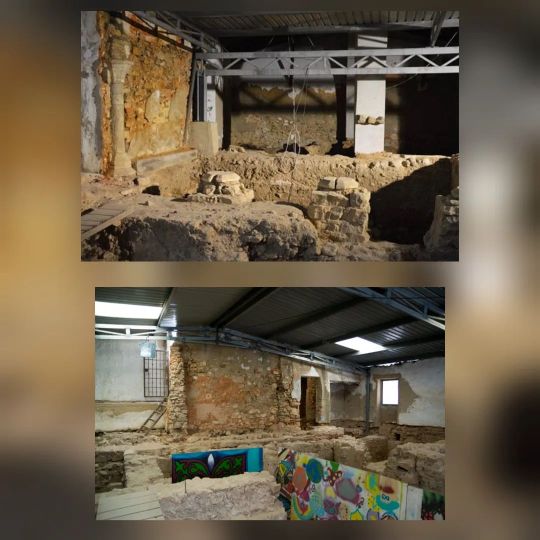
Served as a trash can The history of this place was being built (or reconstructed) as if it were a cake of a thousand leaves. The marks of the different experiences are present in the territory. So much so that the building where the baths are located came to serve as the city's garbage dump about a century after it was abandoned for the purposes for which it was built. “We know that there was a butcher shop nearby”, says Rui Almeida, admitting that it may have been used as a disposal site for waste related to that activity. Later, a noble received authorization from the king to build his residence on the same site. More recently, the great discovery took place. A machine, while digging a ditch to place a rainwater tank in Largo D. Pedro I unearthed tanks and vestibules (patios) in the area adjacent to the archaeological remains - known since 2006. It is at this time that new horizons open up. “We are facing a heritage of great importance, not only for the city of Loulé, but for the whole country”, underlines Vítor Aleixo, adding that the candidacy of Islamic baths as a heritage of national interest was presented. https://www.instagram.com/p/CeJ1cNyDjhV/?igshid=NGJjMDIxMWI=
0 notes
Text
vimeo
A car takes two characters on a journey through the four seasons, on a project that reflects what’s actually the meaning of reality. “Drives you Wonder” is a car commercial that questions
whether a new virtual or an expected physical conclusion are the ultimate answer. This inner reflection blossoms an external revelation about the value of our state of mind, embracing the possibility of always being able to create our own reality, telling us that a feeling can take us anywhere.
Credits
Production Co. | Kaus @kaus.film
Diretor | Steve Bruno @_stevebruno
Executive Producer | Thiago Mascarenhas @tzmascarenhas Adriana Yamamoto @yamamotoadri John Sahs @jasahs
Legal Advisor | Gabriel Amaral @gabamaralo
1st AD | Bice Costa @bicecosta
Production Coordinator | Thiago Freire @fr3ire (@biscuvitasquad) ,
Producer Nahara Faissú @naharafaissu ,
Assistant Producer Cristiane Barini Néspoli, Juliana Furtuoso
Plateau Rafael Martins
Diretor of Photography | Nicholas Bluff @nicholas_bluff
1st Camera Assistant | Mauro Angelo
2nd Camera Assistant | Henrique Terra (Messi)
Logger Edson Paiva
Still Photography | Katharina Giglio @katharinagiglio
Production Designer | Eduardo “Crox” Kissajikian @edukissa
Pratical Effects | Farjala
Car Dresser Marcos Almeida
Costume Designer | André Braune @andrebraune
Costume Assistant | Allan Fernandes , Andressa Simões
Make up Tati Garcia
Graphic Design | Cabinet Projets with Pedro Gabbay, Rodrigo Sganzerla
Casting Producer | Cadu Gandara @contrastemgmt
Driver | André Lima @iam.andrelima
Passenger | Julia Mendes @juliamendesss
Gaffer | Walerio Rosa @walerio_rosa
Gaffer Assistant | Balbe Figueiredo, Claudinei Marcelio, João Neto, Airton Junior, Bruno Ribeiro
Key Grip | Carlos Fidelis @carlos_fidelis_key_grip
Grip Assitant | Orlando, Fabio Silva, Adriana Lima, Rosangela Francisco, Djalmo Cerqueira
Gear Rental | Marc Films @marc.films
Co-Production Quanta @estudioquanta
Virtual Production Quanta @estudioquanta
Virtual Production Director Diogo Costa Pinto @diogo.costapinto
Virtual Production Producer Marcela Favaro @mfdcmfdc
Virtual Production Operator Leonardo Silverio, Gabriel Ferreira, Vinicius Volcof @vinicius.volcof
Unreal Developer Henrique Rente
Voice Over Written By Steve Bruno , Ariel Tabacow Hidal @gothlarrydavid_
Post Production | Post It @postit_vfx
VFX Coordinator | Rodrigo Zorack
VFX Supervisor | Felipe Beserra , Juan Camejo
Editor | Steve Bruno @_stevebruno , Lucas Cainã @b8tleg , Rigel Kilston @rigelkilston with @splashstudios
Color Grading | Osmar Junior @osmarjunior
audio production company Mr.Pink Music @mrpink.music
music composer Henrique Rácz @henriqueracz
sound designer Edilson Martins @noslidemartins
0 notes
Photo

PROCESS OF GUILT Release party “Slaves Beneath the Sun” New album Poster
Photo by Pedro Almeida
1 note
·
View note
Text

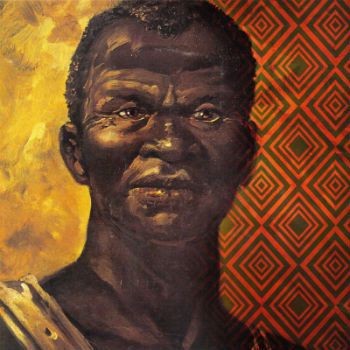
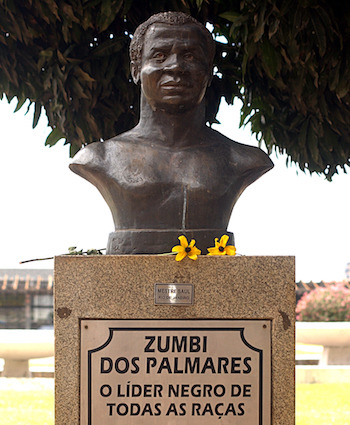
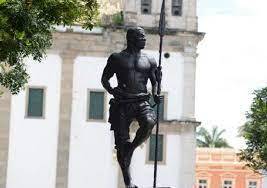

Zumbi (1655 – November 20, 1695), also known as Zumbi dos Palmares (Portuguese pronunciation: [zũˈbi dus pɐwˈmaɾis]), was a Brazilian quilombola leader, being one of the pioneers of resistance to slavery of Africans by the Portuguese in colonial Brazil. He was also the last of the kings of the Quilombo dos Palmares, a settlement of Afro-Brazilian people who had liberated themselves from enslavement in that same settlement, in the present-day state of Alagoas, Brazil. Zumbi today is revered in Afro-Brazilian culture as a powerful symbol of resistance against the enslavement of Africans in the colony of Brazil. He was married to the queen and also great warrior Dandara.
Quilombos were communities in Brazil founded by individuals of African descent who escaped slavery (these escaped slaves are commonly referred to as Maroons). Members of quilombos often returned to plantations or towns to encourage their former fellow Africans to flee and join the quilombos. If necessary, they brought others by force and sabotaged plantations. Anyone who came to quilombos on their own were considered free, but those who were captured and brought by force were considered slaves and continued to be so in the new settlements. They could be considered free if they were to bring another captive to the settlement. Women were also targets of capture, including black, white, Indian and mulatas (women of mixed African and European ancestry), who were forcibly relocated to Palmares. Some women, however, fled voluntarily to Palmares to escape abusive spouses and/or masters. Since small in numbers, men were also recruited to join Palmares and even Portuguese soldiers fleeing forced recruitment were sought out.
Palmares was established around 1605 by 40 enslaved central Africans who fled to the heavily forested hills that parallel the northern coast of Brazil. Portuguese authorities called this area Palmares, due to its many palm trees, and were locked in deadly clashes with it for much of the 17th century
Quilombo dos Palmares was a self-sustaining kingdom of Maroons escaped from the Portuguese settlements in Brazil, "a region perhaps the size of Portugal in the hinterland of Pernambuco". At its height, Palmares had a population of more than 30,000. Palmares developed into a confederation of 11 towns, spanning rugged mountainous terrain in frontier zones across the present day states of Alagoas and Pernambuco. Palmares was an autonomous state based on African political and religious customs that supported itself though means of agriculture, fishing, hunting, gathering, trading, and raiding nearby Brazilian plantations and settlements

Zumbi's mother Sabina was a sister of Ganga Zumba, who is said to have been the son of princess Aqualtune, daughter of an unknown King of Kongo. It is unknown if Zumbi's mother was also daughter of the princess, but this still makes him related to the Kongo nobility. Zumbi and his relatives are of Central African descent. They were brought to the Americas after the Battle of Mbwila.
The Portuguese won the battle eventually, killing 5,000 men, and captured the king, his two sons, his two nephews, four governors, various court officials, 95 title holders and 400 other nobles who were put on ships and sold as slaves in the Americas. It is very probable that Ganga and Sabina were among these nobles. The whereabouts of the rest of the individuals captured after the Battle of Mbwila is unknown. Some are believed to have been sent to Spanish America, but Ganga Zumba, his brother Zona and Sabina were made slaves at the plantation of Santa Rita in the Captaincy of Pernambuco in what is now northeast Brazil. From there, they escaped to Palmares

Zumbi was born free in Palmares in 1655, believed to be descended from the Congo. He was captured by the Portuguese and given to a missionary, Father António Melo, when he was approximately six years old. Father António Melo baptized Zumbi and gave him the name of Francisco. Zumbi was taught the sacraments, learned Portuguese and Latin and built a Kongo kingdom in Palmares.
Despite attempts to subjugate him, Zumbi escaped in 1670 and, at the age of 15, returned to his birthplace. Zumbi became known for his physical prowess and cunning in battle and he was a respected military strategist by the time he was in his early twenties.
By 1678, the governor of the captaincy of Pernambuco, Pedro Almeida, weary of the longstanding conflict with Palmares, approached its king Ganga Zumba with an olive branch. Almeida offered freedom for all runaway slaves if Palmares would submit to Portuguese authority, a proposal which Ganga Zumba favored. But Zumbi – who became the commander-in-chief of the Kingdom's forces in 1675 - was distrustful of the Portuguese. Further, he refused to accept freedom for the people of Palmares while other Africans remained enslaved. He rejected Almeida's overture and challenged Ganga Zumba's kingship. In 1678 Zumbi killed his uncle Ganga Zumba. Zumbi sought to implement a far more aggressive stance against the Portuguese[4] Vowing to continue the resistance to Portuguese oppression, Zumbi became the new king of Palmares.
Zumbi's determination and heroic efforts to fight for Palmares' independence increased his prestige. Predictably, when Zumbi gained authority, tensions with the Portuguese quickly escalated. In 1694, fifteen years after Zumbi assumed kingship of Palmares, the Portuguese colonists under the military commanders Domingos Jorge Velho and Bernardo Vieira de Melo launched an assault on the Palmares. They made use of artillery as well as a fierce force of Brazilian Indian fighters, which took 42 days to defeat the kingdom. On February 6, 1694, after 67 years of ceaseless conflict with the cafuzos, or Maroons, of Palmares, the Portuguese succeeded in destroying Cerca do Macaco, the kingdom's central settlement. Some resistance continued, but on November 20, 1695 Zumbi was killed and decapitated, his head displayed on a pike to dispel any legends of his immortality.
Although it was eventually crushed, the success of Palmares through most of the 17th century greatly challenged colonial authority and would stand as a beacon of slave resistance in the times to come
His contemporary slaves believed him to be a demigod. it was believed throughout the country by slaves that his strength and courage were due to the fact that he was possessed by Orixas, African spirits, and was therefore half-man, half-god. Others thought that he was the son of Ogum.
#african#african culture#ogum#orixas#orisha#afrakan#kemetic dreams#afrakans#brownskin#africans#afrakan spirituality#afrakan woman#orishas#yoruba#goddess#zumbi#ganga zumbi#african spirits#south america#brazil#slaves#macaco#palmares#november#portuguese#portugal#slave rebellion#kongo#congo#central africa
130 notes
·
View notes
Text
Newly translated letters offer indigenous take on Brazil’s bloody birth
Dutch-Portuguese war of 1645 split the Potiguara people but their leaders’ correspondence across battle lines has finally been translated from Tupi
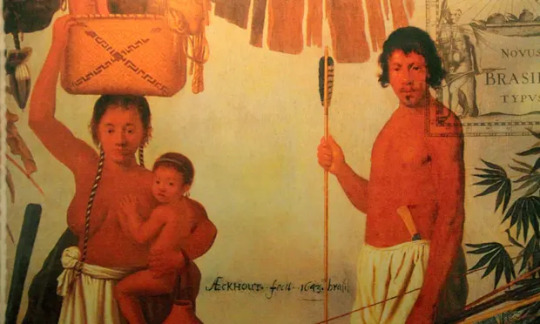
[Image description: photograph of an illustration of a Brazilian indigenous woman, child, and man.]
In 1645, a bloody war raged between Dutch settlers and the Portuguese empire over the sugar plantations of north-east Brazil.
Trapped on either side of the conflict were the Potiguara, a powerful indigenous nation whose leaders penned a series of letters in the Tupi language, enticing their relatives to defect across enemy lines.
Now, a painstaking new translation of the correspondence has been hailed as a “huge achievement” in casting new light on these unique sources written by a native people.
The forthcoming publication is the fruit of 30 years of work by Eduardo de Almeida Navarro, a specialist in classical indigenous languages at the University of São Paulo.
“It’s hugely exciting to be able to make this contribution to the history of my country,” said Navarro.
The letters were first uncovered in the Dutch archives in 1885, but the texts were blotted and jumbled. Many words were not in existing glossaries of Tupi, which gives us words like piranha and jaguar. In 1906, one frustrated translator called the letters “genuine enigmas”.
Navarro spent decades compiling a comprehensive ancient Tupi dictionary, drawing on the accounts of French traders and English buccaneers. This helped him fully translate the letters, revealing the desperate efforts of the Potiguara chiefs to save their people from destruction.
“Why,” wrote Felipe Camarão, a Potiguara captain fighting for Portugal, “do I make war against people of our own blood? … Come to me and I will forgive you. I will make you one with your ancient culture again. Those that stay there will be destroyed.”
Navarro’s work has been applauded among the 20,000 Potiguara still living in the north-eastern Brazilian state of Paraíba.
“For us, it’s a huge achievement,” said Pedro Ka’Aguasu Potiguara, a teacher from Ibicoara. “The letters are full of details and information, and very important for our people.“
Continue reading.
#brazil#politics#indigenous#history#brazilian politics#indigenous history#mod nise da silveira#the guardian got downgraded in media bias fact check but this news is corroborated by brazilian scholarly sources#potiguara people
50 notes
·
View notes
Text

Oscar Niemeyer Defined Modern Brazil. Now, an Artist Is Rethinking One of His Houses.
Set against the dramatic hills of Rio de Janeiro, Adriana Varejão’s recently renovated home brings the architect’s vision to startling new life.
By Thessaly La Force
Aug. 17, 2018
DRIVING UP THE STREET — which, this being a nice residential neighborhood in Rio de Janeiro, is a fortress of fences and high-level security gates — you nearly miss it. Nestled in the verdant Jardim Botânico district — where toucans fly from tree to tree and monkeys can be heard laughing in the afternoon — sits an elegant house designed in 1969 by the great Modernist architect Oscar Niemeyer. It is a stack of white boxes along a hilltop, all right angles against the lush green flora of Brazil, with a spiral staircase to reach the highest box, which stands like a turret overlooking the city. The cliffs that encircle Rio tower dramatically above, beyond which rise the outstretched arms of the city’s Christ the Redeemer statue.
Niemeyer originally designed the property for his wife’s sister, Carmen Baldo. Seven years ago, Baldo’s children sold it to the artist Adriana Varejão and her partner, the film producer Pedro Buarque. Despite its Modernist allure, the house was not an easy sell. The glass walls between the terrace and the living room no longer opened. The ceramic steps and floors that blanketed the property looked dingy. The concrete railing — concrete is cheap, and Niemeyer’s sister-in-law wasn’t wealthy — had failed to acquire a patina. The narrow driveway alongside the house leading to the garage was impossible to navigate because there was no room to turn around. Downstairs, where the bedrooms had been placed along a looming corridor, was dark and gloomy. To fix these problems, the couple embarked on an ambitious five-year renovation that honors the legacy of Niemeyer and the promise of Brazilian Modernism perhaps even better than his original design. In recent decades, Modernism has become solely an aesthetic, divorced from its original intentions. And so, more unusual than the fact of Varejão and Buarque’s restoration is how well it pays homage to Niemeyer’s heritage and architectural philosophy — his lyrical and idiosyncratic sensibilities, scaled perfectly to the mountainous terrain, with large open spaces where the indoors blends seamlessly with the outside.
OSCAR RIBEIRO DE Almeida Niemeyer Soares Filho, born in 1907 in Rio de Janeiro, was one of Brazil’s greatest architects, and certainly its most famous. No other hand has done as much as his to shape the dimensions of the country, reflecting back its primitive beauty — the roiling depths of the sea, the undulating curves of the shoreline, the dense jungle — in its buildings. Along with his teacher-mentor, the architect and urban planner Lúcio Costa, and the landscape architect Roberto Burle Marx, Niemeyer was part of a group of Brazilian Modernists who believed in constructing a nation that would usher itself into a new era of equality and prosperity. All three, but especially Niemeyer, were deeply influenced by the French architect Le Corbusier. Like Le Corbusier, Niemeyer was partial to working with reinforced concrete, the flexibility and sturdiness of which helped his structures achieve the poetic, biomorphic forms that came to define his work. Just look at the hovering saucer of the Niterói Contemporary Art Museum(1996), perched at the edge of Rio’s Guanabara Bay, or the Cathedral of Brasília’s (1970) brilliant white crown of spears, which seems to sprout from the earth. As Niemeyer famously wrote in 1998, “I am not attracted to straight angles or to the straight line, hard and inflexible, created by man. I am attracted to free-flowing, sensual curves. The curves that I find in the mountains of my country, in the sinuousness of its rivers, in the waves of the ocean and on the body of the beloved woman.”
Niemeyer’s legacy rests largely in his creation of the city of Brasília in the late 1950s, which he conceived with Costa, at the behest of Brazil’s president at the time, Juscelino Kubitschek, who had campaigned with the slogan “Fifty years’ progress in five.” Kubitschek was an ambitious leader who believed Brazil could industrialize at lightning speed, shed its colonial past and compete in the global economy. Located hundreds of miles inland, Brasília was erected in just three and a half years at an exorbitant cost (estimates put it at the tens of billions in today’s dollars), replacing Rio as the country’s capital in 1960. Niemeyer, who found inspiration in Le Corbusier’s unrealized Radiant City, a utopian concept where life was ordered by design, wrote: “The seat of government must be established in the heart of Brazil’s vast territory, so that it surveys the whole national panorama, so that it will be within reach of all the classes and all the regions.” But once made, the large plazas meant to stimulate civic life remained empty. The thousands of workers who had traveled from the less industrialized parts of the country were left stranded in the low-income housing, or favelas, that had been hastily erected during construction. In 1964, a military coup supported by the United States government changed the course of the nation forever. Politically to the left of the new military regime, Niemeyer moved to Paris in 1967. His career suffered. Over the decades, architectural Modernism became less popular, perceived as too dogmatic — but Niemeyer continued to work, finding newfound appreciation in the years before his death at the age of 104 in 2012. Some of his most stunning works are in Brasília, including the Supreme Court (1958-60), whose columns of concrete clad in white marble echo the fluttering of a sheet in the wind. Ultimately, though, Brasília’s failure overshadows its monumental promise.
Brasília is also where Varejão spent the beginning of her childhood. The artist was born in Rio, but her parents moved to the city when she was 2 years old. Her father was a pilot in the air force. Her mother worked in public health as a nutritionist in Sobradinho, one of the several satellite cities ringing Brasília’s perimeter. Accompanying her on hospital visits, Varejão witnessed firsthand the inequality Brasília created. “The future never happened,” Varejão tells me, “Brasília left us with some very nice buildings — I’m not saying they aren’t important — but it was at a very high cost.”
ONE MAY AFTERNOON, Varejão, 53, welcomes me to her studio, located five minutes from her home. It is autumn in Rio, though it feels like spring until I sense the sun hastily setting over the horizon. Varejão is preparing for a summer show with the Victoria Miro gallery in Venice, as well as her largest and most significant show to date with Gagosian Gallery, to be held in New York City in early 2020.
She is at work on some large-scale paintings inspired by Mexican ceramic tiles (talaveras) as well as a series of sculptures made from polyurethane, painted to resemble tiled walls but whose insides are revealed as bloody innards. Her process for the former involves pouring a mixture of glue and plaster into a flat, lipped canvas, which is then left to dry over several days. The plaster cracks naturally, and Varejão paints them in a monochromatic white, coloring the edges a claylike shade to lend them the appearance of cracked terra cotta. In previous work, Varejão has created abstract, vaguely discomfiting images on the cracked canvases — on others, the distinctive blue patterns of traditional Portuguese tiles (azulejos). To Varejão, the azulejo is a metaphor for the complicated history that defines Brazil; it is hers to manipulate in various formations and with various patterns, at once beautiful and familiar, but also deeply disquieting.
Varejão is one of Brazil’s most important living artists. She is primarily a painter, but she has worked in other mediums such as photography, video and sculpture. Her work is, in many ways, in dialogue with that of last century’s Italian painter Lucio Fontana, who famously took the scalpel to the canvas and slashed it — “Art dies but is saved by gesture,” he wrote in 1948. If Fontana alluded to pain with his holes and cuts, then Varejão takes the symbolism one step further, illustrating violence through literal renderings of blood and gore.
At Varejão’s urging, I visit the São Bento Monastery, a Benedictine abbey completed in 1671, located across the city in downtown Rio. Inside, its Baroque details — ornate gold-leaf gilding and Rococo painted tiles — are transportive, delivering one to a much older Brazil. But after witnessing the violence rendered by Varejão’s brush, I cannot help but see this other Brazil as tainted with the complicity of colonialism’s brutality. The strange geometry of Brasília is a world apart. Niemeyer’s idealism — his belief that architecture could create a world that was post-race and post-class — was naïve, perhaps, but understandable. How else can a nation propel itself forward after having been so carelessly used — stripped and mined, bought and sold, without any consideration for anything but profit? The clean lines and syncopated curves of Niemeyer’s architecture seem necessary compared to Baroque’s dense hierarchy.
TODAY, THE CARMEN Baldo house is no longer a relic. In a dramatic reconfiguration, Varejão and Buarque decided to move the garage underground, which required digging deep into the hill. Even more flamboyantly, they purchased the property next door and demolished it, which allowed them to build a pool, a lush outdoor living space, a patio and a larger garden. They cut a large circular window into the living room so that it would overlook the pool, providing a sense of continuity between the two spaces. There are smaller touches as well: Though they kept the original color of the marigold yellow Formica in the kitchen, they knocked down the back wall, echoing the fluidity between the living room and the front terrace. Niemeyer understood the beauty of Modernism in Brazil’s climate, and his open-air plans integrated perfectly with the textured scenery of the tropical outdoors. Lastly, all of the ceramic flooring as well as the terrace railing was replaced with Brazilian soapstone, its dark mossy green jagged with electric white stripes.
That night, I am invited to dinner by Varejão and Buarque. I’m curious to see the house as it was intended: full of people, made imperfect by a kind of kinetic carelessness. When I arrive, open bottles of wine sweat in an ice bucket beneath a Lygia Clark painting. I sag into a leather chair by Lina Bo Bardi. Varejão serves a traditional meal that we eat on a large dining table made by Sergio Rodrigues — picadinho (beef stew) and baked fish, rice and beans, a banana purée, fried quail’s eggs, and chopped cabbage from the countryside garden of Varejão’s friends, the filmmaker Walter Salles and his wife, the artist Maria Klabin. Varejão and Buarque’s friends are artists, singers, musicians, writers — we discuss everything from João Guimarães Rosa’s Joycean novel “The Devil to Pay in the Backlands” (1956) to the pessimism that surrounds Brazilian politics today. Modernism may have become an empty expression of bourgeoisie taste, but here it feels reinvigorated, charged. I’m told many times that I must visit Brasília, which is less than two hours away by plane.
Instead, the next day, I go to the house Niemeyer built for himself in Rio in 1953. It is past Leblon, the wealthy beachside neighborhood, in Barra de Tijuca, another wealthy beachside neighborhood. On my winding drive there, I glimpse the favelas. This is Rio, too, where immense poverty abuts immense wealth. Niemeyer was disdainful of money, even if he worked with those who had it. He rarely wrote about the private residences he designed, and he allowed only a handful to be illustrated or listed — as is the case with many prominent architects, he largely considered these designs exceptions, favors or one-offs. But his own house, with its views of both the mountains and the ocean, is canonical for its elegant curves and its cloudlike roof that sweeps across the horizon. To Niemeyer, light was a form of pleasure.
The house now sits unused but open to visitors; two volunteers from the Oscar Niemeyer Foundation inform me that the furniture is contemporary. That Niemeyer couch was his. But the fabric is soiled. The books downstairs belong to his personal library. But the pages have warped from the humidity. The pool, less a kidney and more of a chickpea, is filled with leaves. I feel like someone discovering a bronze Roman statue at the bottom of the Aegean Sea, its beauty disguised by oxidization, its form marred by barnacles and tangled seaweed. As I flip through a pamphlet laid out for visitors, I see pictures of the house sometime in the 1950s, filled with guests at a party. They are nattily dressed, laughing, with cocktails and cigarettes in their hands. They look as if they are still waiting for the future to arrive.
#Rio de Janeiro#Architecture#Oscar Niemeyer#Roberto Burle Marx#Modernism#Casa Baldo#Thessaly La Force#Brazil
19 notes
·
View notes